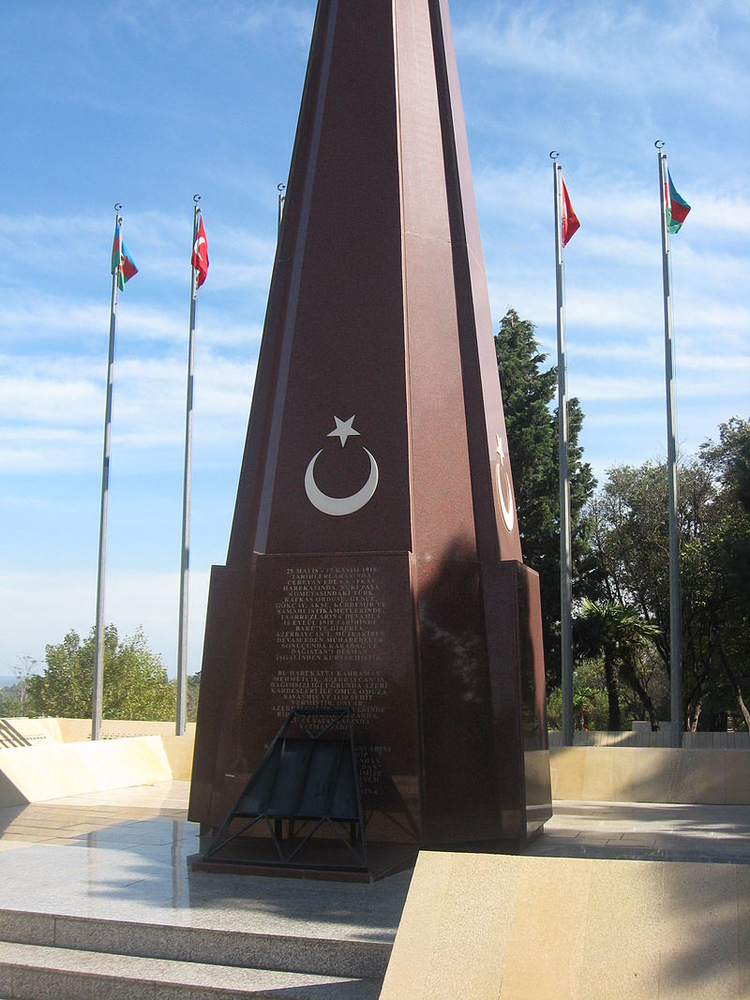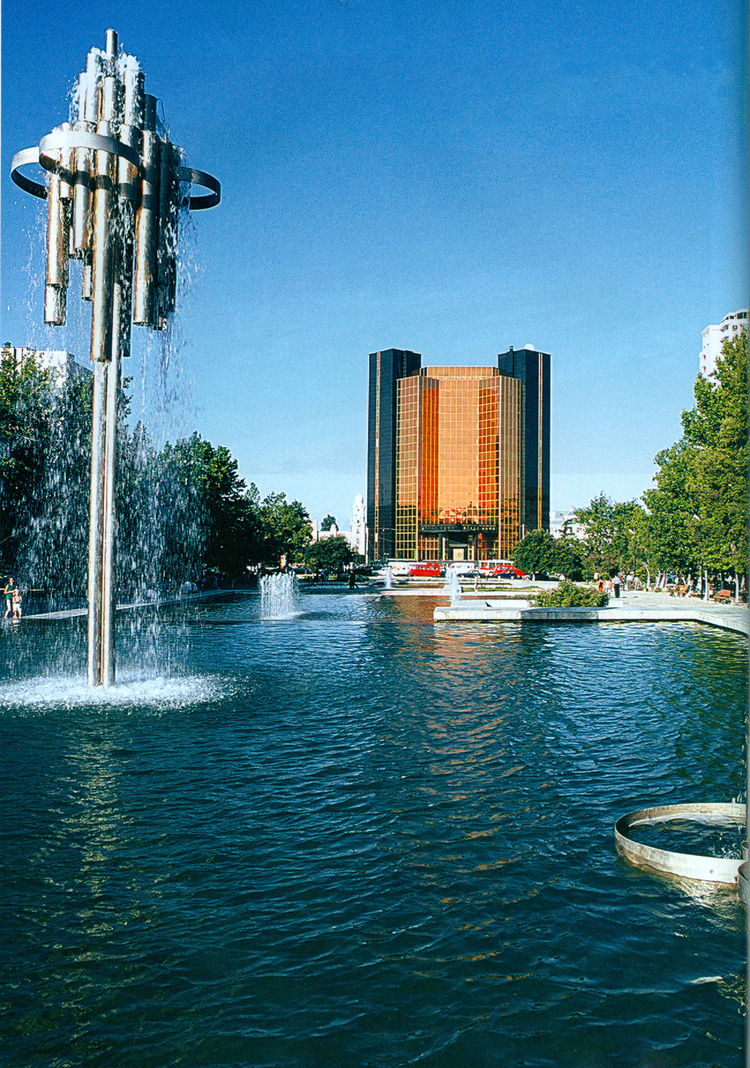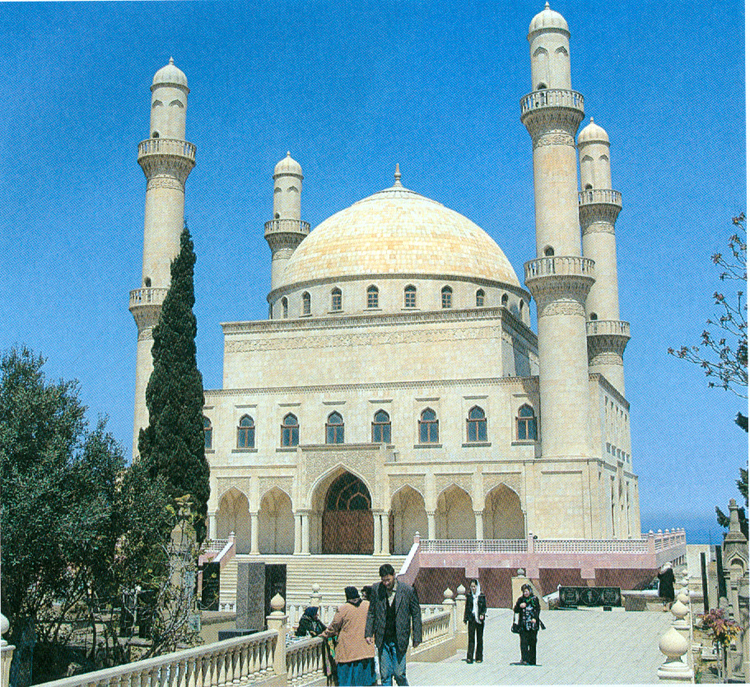The period of independence
Though Azerbaijan gained its independence on October 18, 1991, the black clouds hanging over the country did not disperse.

On December 8, 1991 in Viskuli, the residence of the Belarusian Government in Belovezhskaya forest preserve, the leaders of the Russian Federation, Republic of Belarus, and Ukraine signed the Agreement on establishment of the Commonwealth of Independent States (CIS). “Belovejsk agreement” confirmed that the USSR, as a subject of international law and a geopolitical reality, ceased its existence.
Although Azerbaijan did not accede to this agreement, a nation-wide vote was held on December 29, 1991 in order to overcome the external threats and neutralize the internal pro-imperialist forces inside. The Azerbaijani people unanimously voted for the state independence.
A very complicated situation prevailed in the Republic of Azerbaijan, which regained state independence by the will of the people.
State symbols of independent Azerbaijan were adopted. The process of recognition of the independence of the Republic of Azerbaijan by the states of the world was accelerated. On March 2, 1992, the Republic of Azerbaijan was admitted to membership in the United Nations. Once again, the city of Baku retained its status as the capital city.

Turkish soldiers who died for the liberation of Baku.
Nevertheless, from the time of the Soviet Union, independent Azerbaijan inherited the Nagorno-Karabakh problem, which arose as a result of Armenia's territorial claims against Azerbaijan. The Armenians carried out large-scale military operations in Nagorno-Karabakh first with the support of the USSR and later by the Russian military forces, occupied a number of favourable strategic positions and began to expel the Azerbaijanis from their native lands. In September 1991, an illegal, puppet state called the "Nagorno-Karabakh Republic" was established in Nagorno-Karabakh. In response to this, on November 26, 1991, the Supreme Soviet of the Republic of Azerbaijan adopted the Law "On Abolishment of the Nagorno-Karabakh Autonomous Oblast of the Republic of Azerbaijan".
On October 9, 1991, the Supreme Soviet of the Republic of Azerbaijan adopted the Law "On the National Self-Defence Forces of Azerbaijan". Instead of forming a regular army, self-defence battalions were established in regions and cities. The Azerbaijani settlements of Nagorno-Karabakh were occupied one after another by the Armenian armed forces. All this aggravated the situation in Baku gradually and steadily. On the night of February 25-26, 1992, one of the most horrible atrocities of the 20th century - the Khojaly genocide was committed. Genocide, which was committed by the Armenians in the Azerbaijani town of Khojaly in the late 20th century, is considered one of the gravest crimes against humanity. After that, the situation in Baku was aggravated and mass rallies were being held again. President Ayaz Mutallibov was forced to resign on demand of the people.

The situation in Baku was further aggravated with the occupation of Shusha and Lachin regions of Azerbaijan in May 1992. A new change of power took place. Although the Popular Front of Azerbaijan came to power, the anarchy prevailing in the country was not prevented. Although the Azerbaijan Popular Front came to power, the anarchy prevailing in the country was not prevented. Taking advantage of the opportunity, the Armenian armed forces occupied the Kalbajar region on April 3, 1993.
The June uprising that broke out in Ganja exacerbated the situation. Surat Huseynov’s military unit No 709 did not submit to the Ministry of Defence. In the morning of June 4, the government led the troops into Ganja in order to suppress the military uprising and fraternal blood was shed. The government forces were defeated. The insurgents launched an attack on Baku demanding the resignation of the president and the government. They approached the capital encountering no resistance. On June 14, the troops stood face to face near Navahi. As a result of negotiations it was possible to stop them near the village Lokbatan and on the 75th kilometre of the Shamakhi road. In connection with the situation arisen, the chairperson of the parliament, the prime minister, and the heads of three power ministries had to resign.
The disintegration and separatism processes in the country entered a new phase at the instigation of foreign forces. Meanwhile, the colonel Alikram Humbatov sought to take over power in the southern regions and to establish a separatist "Talysh-Mughan Republic". Dreaming of the utopian idea of establishing "the state of Lezghistan" the armed bandits of the separatist Sadval organization committed sabotages in the north-east of the country.

The authorities, realizing that they were unable to prevent the dangerous processes that had begun, turned for help to the chairman of the Supreme Majlis (Council) of Nakhchivan Heydar Aliyev at the last moment. Heydar Aliyev accepted the persistent invitations of the people and the ruling circles of the republic and came to Baku on June 9. He took drastic measures to stop the civil war in Azerbaijan. On June 15, Heydar Aliyev was elected chairman of the Supreme Soviet of the Republic of Azerbaijan. Thus, June 15, became history as the National Salvation Day in Azerbaijan. On October 3, 1993, as a result of the nationwide vote, Heydar Aliyev was elected President of the Republic of Azerbaijan. Thus, a new stage of state building has begun.
The "Contract of the Century", signed on September 20, 1994 with a consortium of the leading oil companies worldwide, contributed to the large-scale capital investments in Azerbaijan and the country's participation in other global international economic projects.
However, ensuring of social and political stability and successful steps taken on the way of state building, at the same time, had set in motion certain inconstant internal forces and their foreign supporters that did not abandon their unreasonable political claims. Those forces, that opposed to the national interests of Azerbaijan, did not shy away from speaking openly against our independent statehood and attempted to stage a coup d'état in October 1994 and in March 1995 with the participation of illegal armed groups. Nevertheless, the failure of the coup attempts showed that the state of Azerbaijan already relies on the support of majority of the people.

On November 12, 1995, the first parliamentary elections were held in the independent Republic of Azerbaijan. On the same day, the first Constitution of independent Azerbaijan was adopted by referendum.
Azerbaijan gradually embarked on the course of dynamic development. Baku’s tumultuous and riotous years of 1991-1995 were left behind. Construction and landscaping works started in Baku. The appearance of the city gradually improved. Today Baku is compared with the most developed and beautiful cities of the world.
